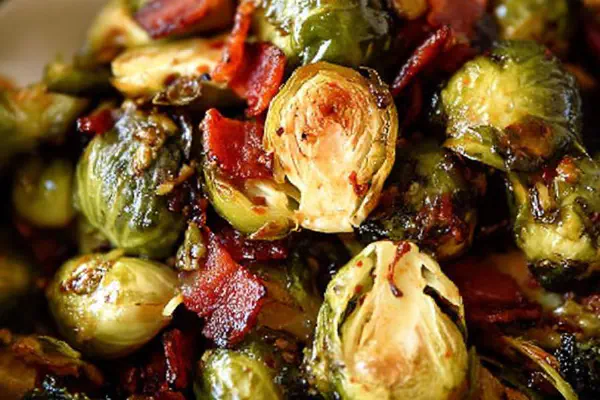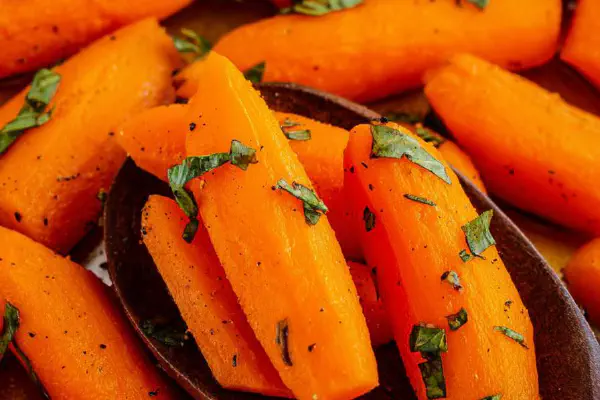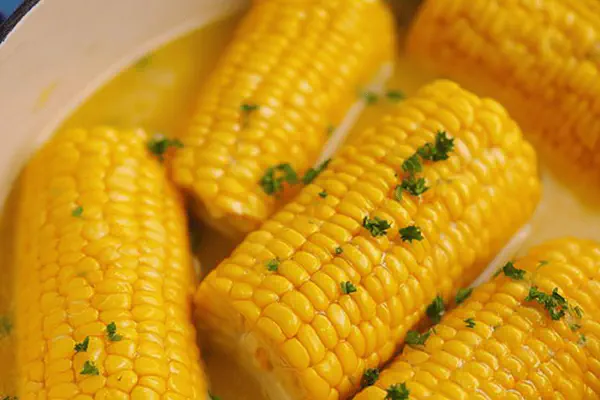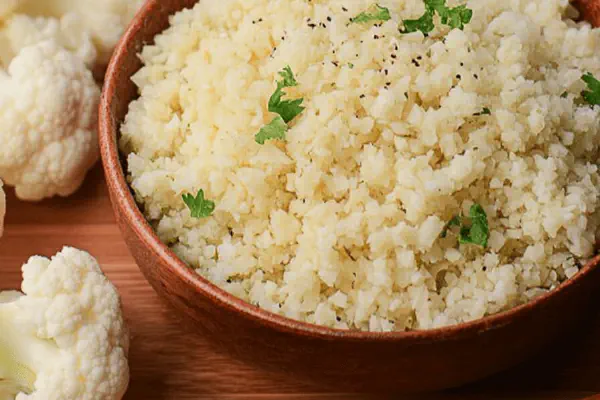Spiced Roasted Acorn Squash

By Emma
Certified Culinary Professional
Ingredients
- 1 medium acorn squash
- 1/4 teaspoon fresh ground nutmeg
- 1/2 teaspoon ground cinnamon
- 1/4 teaspoon fine sea salt
- 3 tablespoons unsalted butter
- 2 tablespoons brown sugar
- 2 tablespoons date syrup
- 1/2 cup spiced pecans
Notes
- Date syrup replaces maple syrup for a deeper, rich sweetness. Pecans swap candied walnuts for added flavor complexity and crunch. Always fresh grind nutmeg for punch; pre-ground declines fast. Salt balances sweetness; don't skip.
About the ingredients
Method
Method
- Start by cutting the acorn squash in half. Scoop seeds with a sturdy spoon—don’t scrape hard or risk skin damage.
- Place halves cut-side down on a board. Slice into quarter-inch thick slices parallel to the stem. Skin stays on; adds texture when roasted.
- Line a rimmed baking sheet with parchment—helps avoid sticking and burns. Lay slices flat in a single layer without overlap—crowding steams, ruins roast.
- Lightly mix fresh ground nutmeg, cinnamon, and salt in a small bowl. Evenly sprinkle over squash slices—dose gently, spice is potent.
- Roast in preheated oven at 350°F. Don't just watch the clock; check after 35 minutes by piercing soft, fork slides smoothly. Edges should bubble and worry, with some caramelization but not char. Thicker slices need a bit longer.
- Meanwhile, place butter, brown sugar, and date syrup in a small pan over low heat. Melt slowly—avoid boiling or scorching. Stir until sugar crystals vanish, mixture glistens, smooth and fragrant.
- Remove squash from oven; arrange slices on a platter.
- Drizzle warm syrup gently over slices, watch that glossy sheen form. Top with spiced pecans for crunchy contrast and a hit of buttery depth.
- Served warm or room temperature; holds well covered for a few hours. Leftovers reheat gently or add chilled to salads for texture play.
Tips & Tricks
- Pick acorn squash that’s firm with deep green skin; avoid soft spots.
- If time is tight, halve thickness but monitor roasting carefully.
- Oven variations can cause uneven cook; rotate pan halfway through.
- Substitute pecans with spiced pumpkin seeds for allergy-friendly crunch.
- Butter alternative: olive oil or browned butter for nuttier undertones.
- Sugar substitute: maple syrup or honey possible; adjust roast glaze to avoid burning.
Cooking tips
Chef's notes
- 💡 Thin slices matter big. Quarter-inch thick keeps caramel spots without mush. Thicker chunks slow roast; edges stay pale. Uniform cuts mean even cook. Cut parallel to stem avoids ragged bits—skin on for texture contrast. Don’t crowd tray; single layer essential. Overlap steams slices, no golden edge forms. Rotate pan halfway; ovens picky with heat spotting.
- 💡 Fresh nutmeg beats pre-ground. Powder loses punch quickly, flavor dulls fast. Mix spices loosely, sprinkle gently. Too much nutmeg overwhelms—itchy bitter notes. Salt balances sweet and clings heat for caramel edges. Skip salt, squash turns bland, syrup too sharp. Swap nutmeg for allspice or ginger to twist flavor fast. Small swaps give big shifts on palate.
- 💡 Warm the syrup slow, low heat only. Boiling kills smooth gloss; turns bitter. Stir till sugars melt fully, no grain left. Glossy, slightly thick, not scorch. Drizzle just warm, not hot, over squash. Hot syrup melts nuts, dull crunch. Use brown sugar, not white; depth matters. Maple or agave swap easy. Date syrup holds flavor better roasting aromas intact.
- 💡 Spiced pecans add crunch and fat layer. Candied walnuts can work but sharper, less buttery. Toast almonds or pepitas for nut allergy option—smaller bite, less sweetness, more texture. Butter best for glaze sheen, olive oil okay substitute; loses richer tones. Brown butter adds nuttier undertone but watch burn risk. Butter plus sugar and syrup blend gives silky coat, mouthfeel changes.
- 💡 Watch the roast—clock unreliable here. Listen for bubbles at edges; look for wrinkles and slight caramel color. Fork should slide in softly but not collapse slice. Thicker slices + hotter oven = longer cook, sometimes 5 minutes more. Thinner slices scorch easily; cut thinner if rushed, but watch carefully. Parchment liner stops sticking and sugar burns. No direct tray, no stuck bits ruining bite.
Common questions
What if my squash is soft?
Softer squash breaks down faster, thin slices help avoid mush. Cure times differ, weigh firmness over size. Soft means water content up, edge crisp less likely. Roast with care; might need less time, check often.
Can I skip nutmeg?
Yes, but flavor shifts. Substitute with allspice or ground ginger—both bring warmth but different notes. Cinnamon must stay for the base sweet-spice combo. Without nutmeg, risk blandness but ginger spices more punch, alters profile quick.
Syrup substitutes?
Maple or agave works; adjust roast timing glaze thickness. Date syrup deeper, less prone to caramel taste flattening. Avoid honey hot heat; burns easy. Brown sugar key for sweetness and mouthfeel synergy with butter. Melt sugar fully before drizzling, skip crystallized chunks for best coverage.
How to store leftovers?
Cover warm or room temp a few hours. Fridge store airtight for 2–3 days max. Reheat low and slow or cold add to salad for crunch contrast. Freeze okay but texture softens, squash loses firmness once thawed. Use parchment prevents soggy edges storing too.



